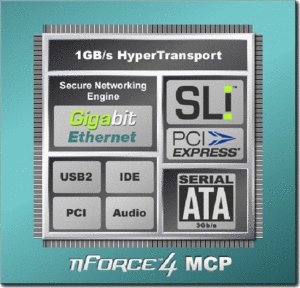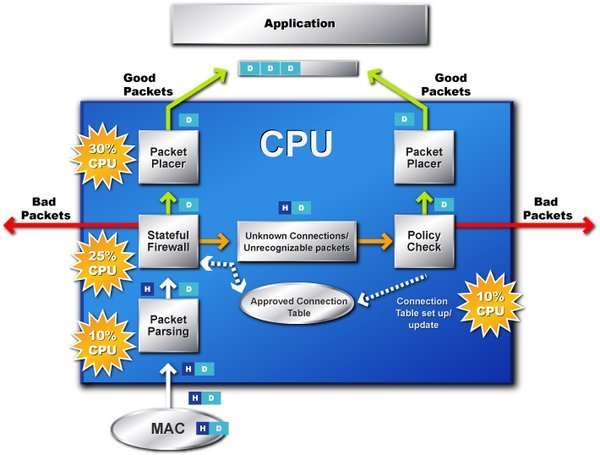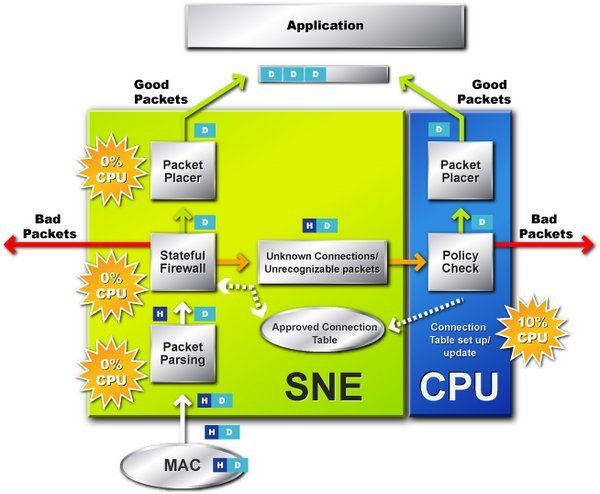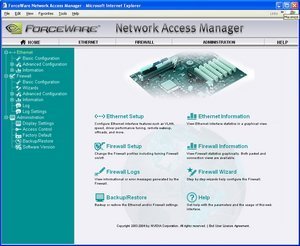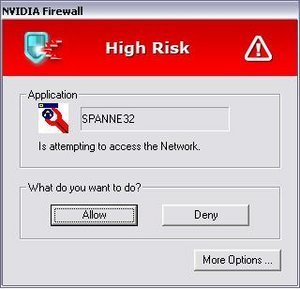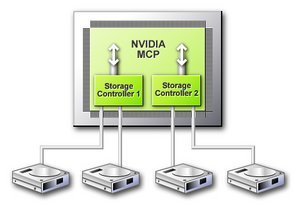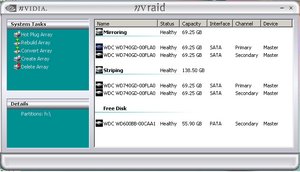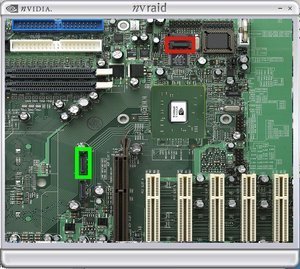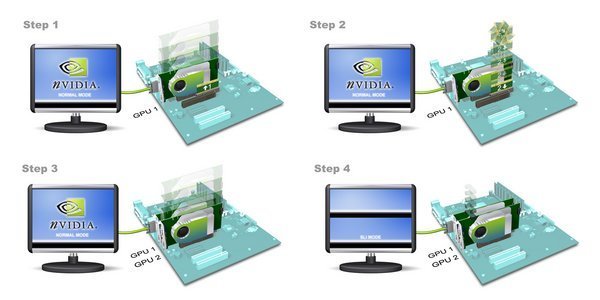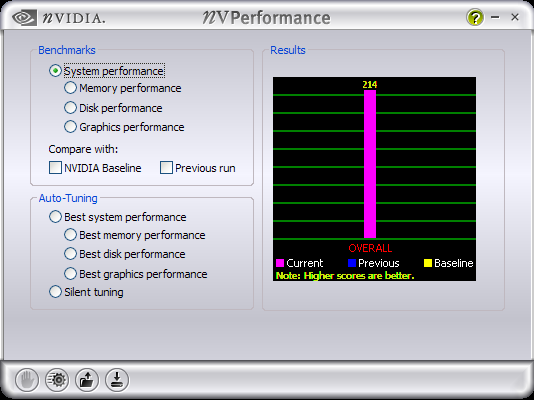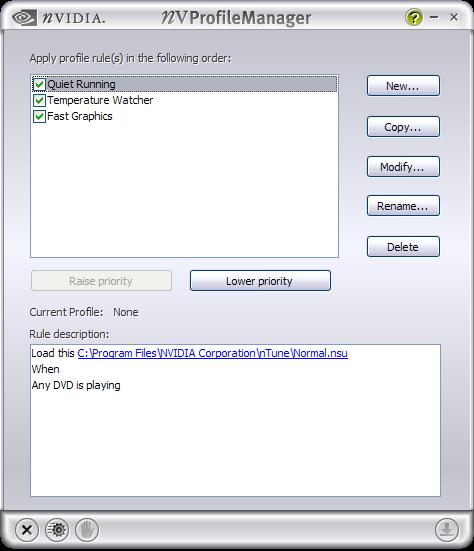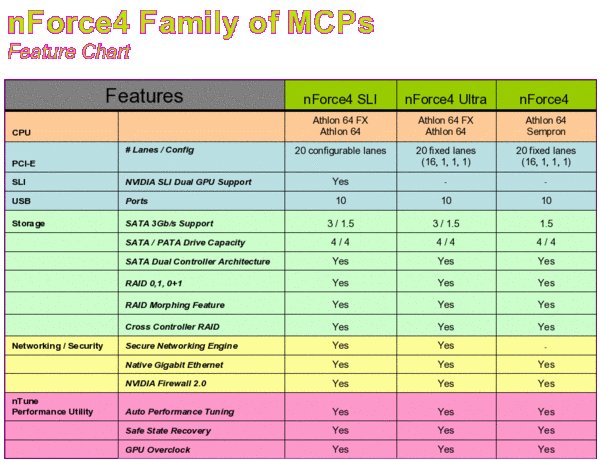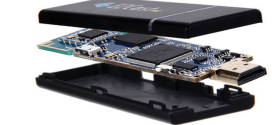nVidia’s nForce4 is finally here! We have a complete scoop on nVidia’s solution for the Networked Digital Media era!

Introduction
The eagle has landed! nVidia’s nForce4 is set to dominate the AMD64 marketplace, and it has plenty of features to offer to all levels. There is far more to this new chipset than the much-hyped SLI architecture; in fact, in my opinion the most exciting features are what will be offered to the average customer. Last week I met with nVidia and witnessed the nForce4 for myself…prepare to be impressed!
New Brands
So, what does the nForce4 have to offer to you? Well, most obvious are the three different flavors of nForce4:
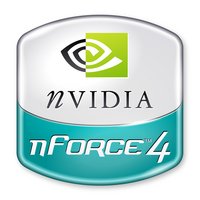 |
 |
 |
| Mainstream/Value $55-$80 |
Deluxe $100-$150 |
High-End (SLI) <$200 |
nVidia is attempting a broad product strategy with the nForce4, offering something for everyone. There are a few differences between the new platforms and the features offered, but they are all based upon the same nForce4 core.
The New MCP
The nForce4’s critical features lie within the slab of silicon and are truly the gem of the new platform.
The key components are these four:
-
nVidia ActiveArmor Hardware Firewall for complete home security without compromising performance.
-
PCI Express support (good-bye AGP!) to allow new levels of device throughput and capability.
-
Serial ATA2 and nvRAID for both speed and reliability.
-
SLI Technology to enable the fastest possible graphics performance.
First, lets take a look at what ActiveArmor is all about. What’s so awesome about a hardware firewall, anyway?
nVidia ActiveArmor
Firewalls are no longer an option in today’s crazy networked world; routers and software firewalls (such as that which comes with MS Windows XP) are in use everywhere. That’s right! You probably already have software that can do the job! So what is the big fuss with ActiveArmor? What does it mean to have a hardware firewall, anyway? This is one feature that I am excited about, and nVidia thinks you will be too!
A normal software firewall truly puts the CPU to good use. Every single packet of data coming in from the network connection has to be processed to determine if it is good or bad. The bad are thrown right away into the garbage. If the computer isn’t certain about a packet, it will run checks against it to see if it is valid or not (Based on policies determined within the software). If it fails this check as well, it also is trashed. Finally, the good packets that make it through (if any) are reassembled and placed in readable form so that an application can finally continue its work.
A look at the graph above shows that all of this is quite tough on a system; in fact, when a computer is in a high traffic situation, it can truly make it almost unusable!
During the nVidia product demo I attended, we benchmarked a few games under a very heavy stress scenario while playing a game or watching a movie.
The system tested was truly built for performance. Sporting an nForce4 Ultra board, an AMD Athlon64 3800+, 1GB of RAM, and a Geforce 6800 Ultra PCI Express graphics card, this system was quite formidable indeed! While an Athlon64 4000+ system was pumping 840 megabits (.84 Gigabit) in a huge effort to saturate the network connection (using MS’s nttcp tool), we decided to benchmark a game and see how a movie would play. We also turned on the Norton Internet Security Firewall in an effort to filter the flood of data. These are my observations:
DUNGEON SIEGE: LEGENDS OF ARANNA
-
Before network traffic: 59 fps
-
After network traffic: ~8 fps
DVD-Quality Video Sample (from Microsoft.com)
-
Before network traffic: Smooth as glass in Windows Media Player
-
After network traffic: Slideshow
Looking at the task manager, I saw the CPU usage hovering around 70-80%! What happens when we turn off the software firewall and enable ActiveArmor?
nVidia ActiveArmor (Continued)
After demoing with the Norton Firewall, we decided that it was time to switch on ActiveArmor.
Here you can see that nearly all of the processing is placed on the MCP’s new hardware firewall engine. Only the user-configurable policy checking is done on the CPU. To prove that there is a much lower overhead, we once again blasted the test system with the enormous flood of packets: CPU usage hovered at 15%! We tried playing the game and watching the movie once again:
DUNGEON SIEGE: LEGENDS OF ARANNA
-
Before network traffic: 74 fps
-
After network traffic: 51 fps
DVD-Quality Video Sample (from Microsoft.com)
-
Before network traffic: Smooth once again.
-
After network traffic: No difference!
What I found most impressive is the sheer amount of data being processed. 840 Megabits/sec is equivalent to about 105 MegaBytes/sec of data! That’s quite a bit of stuff to shuffle through! A personal computer outfitted with this sort of hardware could likely handle a DOS (Denial of Service) attack, although of course the network would still be congested.
Finally, all of this power would be totally useless if there was no software to drive it. nVidia has updated their web-based firewall software for this new generation, and on top of this have decided to provide the updated software to all nVidia firewall users (both software and hardware based).
Not only does the web-based software offer complete control over what goes in and out of your computer, but it ties in with nVidia’s new Forceware drivers to provide a very thorough security package. Further, I gathered a few more interesting tidbits on nVidia’s ActiveArmor technology and its hardware firewall:
-
Linux support is coming. This is very important, as it doesn’t alienate nVidia from power-hungry Linux users (like myself!).
-
Microsoft Longhorn Compatible. Microsoft and nVidia are working together for complete hardware firewall support.
-
ICSA Certified Personal Firewall. Rigorously tested for potential problems, certified bulletproof. Go here for more info.
-
Microsoft Firewall Integration. nVidia’s hardware firewall should soon be utilized by MS’s Windows XP firewall.
-
Advanced Features. Hashing to prevent tampered applications from reaching out to other PCs. Anti-hacker effective.
Overall, nVidia has a truly excellent value on their hands with ActiveArmor. Now you can actually hook your computer up straight to the ‘Net if you so choose! The only real issue I can see is that the ActiveArmor hardware firewall isn’t enabled in the barebones nForce4 MCP. For this reason, I would opt for the more capable nForce4 Ultra MCP.
nvRAID and SATA2
Another central feature, nvRAID is part hardware and part software.
nVidia is offering dual SATA2 (Serial ATA 2, 3gb/s) controllers for its nForce4 SLI and nForce4 Ultra series of chips. The standard nForce4 only offers SATA, but it still retains the other characteristics of its higher-end brethren. One feature that caught my eye is the ability to set up RAID arrays that contain both Serial ATA and ordinary Parallel ATA drives. This means that you can grab a dirt cheap 200GB drive now, and then set up a RAID with a 200GB SATA drive later!
The RAID functionality is controlled with a powerful and easy-to-use utility called nvRAID, which places all the RAID controls within a mouse click. Here you can build, optimize, repair, and convert arrays. Hot-swap SATA2 arrays are supported, and seeing them in action was quite impressive!
One powerful capability offered by the software is the ability to convert a RAID 1 (mirroring) setup to a RAID 0 (striping) setup on-the-fly.
The nVidia guys also demonstrated their visual drive failure indicator. If a drive in an array fails, how would you know which one to replace? The software lets you know what’s going on with its “traffic-light” indicators that put a color overlay on top of an image of your motherboard. There are a few other things to take note of:
-
There is no planned Linux support for nvRAID. Probably nvRAID’s biggest drawback; this does not apply to Windows users.
-
The nvRAID software is backwards compatible with older nForce products. Get the new nvRAID for your old stuff!
-
SATA drives are now bootable without any additional drivers. Tired of pressing F6 during Windows XP setup? Me too!
SLI Technology
Perhaps the biggest news in the graphics world today is nVidia’s SLI technology. Allowing two high end Geforce 6800 Ultra/GT cards to work together drawing each frame, enabling SLI mode on suitable hardware should result in a nearly 2x performance increase. nVidia has incorporated an interesting solution for this capability into their nForce4 SLI MCP.
Each nVidia nForce4 SLI equiped motherboard has dual x16 PCI Express slots. Single card mode allows access to both of the slots, but as soon as you drop a second SLI-capable GPU into the second x16 PCI Express slot and flip the signal-routing board around, it turns both x16 slots into x8 slots and places the motherboard in full SLI mode. Finally, you must enable SLI in the graphics drivers. I got to see an SLI-equipped system in action…here are the specs:
- CPU: Athlon64 4000+
- RAM: 1GB at 400MHz (DDR)
- Video cards: Dual nVidia Geforce 6800 Ultra PCI Express using Forceware 66.72 drivers
- OS: Windows XP Pro
We ran some benchmarks using Doom3 and Halo. The sheer pixel-churning might of these cards is quite impressive. In fact, I think that the scores might even be CPU limited!
NO SLI (Single GPU Mode)
- DooM3 Demo, Demo01 1600x1200x32 with 4x AA no AF no Vsync and High Detail – – 42.4 FPS
- Halo Demo, 1600x1200x32 no AA – – 57.21 FPS
SLI MODE (Dual GPUs)
- DooM3 Demo, Demo01 (same settings as above) – – 71.9 FPS
- Halo Demo, (same settings as above) – – 79.01 FPS
For smiles and grins, we also did a run through of 3dmark05 with SLI mode on:
- 3dmark05 Free Edition (standard settings) – – 9259 3dmarks
If cash is truly no object, you certainly are getting the very top end of performance with an nForce4 SLI board and dual 6800 Ultras!
nVidia nTune
Finally, nVidia is tackling the challenge of bringing the absolute pinnacle of computer performance to the end user by introducing its nTune software. Compatible with all nForce platforms (usually only a manufacturer BIOS update is needed for more functionality), nTune software is a great way to squeeze every last bit of performance out of your nVidia hardware.
If your motherboard and BIOS allow it, nTune can control it. The greatest feature contained within nTune isn’t its manual overclocking features, however. The real gem lies within its automation.
With the Auto-Tuning features, nVidia has created a piece of software that takes the guesswork and time-consuming labor out of overclocking. The auto-tuning works by changing a setting, comparing it to the previous setting, and then keeping the faster of the two. If a setting is too rigorous and it fails the testing procedure, it reverts to its previous successful setting and keeps working at optimizing. nTune’s optimization procedure takes it into the realm of voltage tweaking, front-side bus altering, and even GPU overclocking for maximum performance. If the system crashes while the software is testing settings, the machine will continue its tuning process at the next reboot by falling back to previous settings. Finally, not only can you tune individual features, but you can choose to optimize your computer for minimum heat output as well. This is perfect for those situations when you are doing word processing or web page viewing and the excess power is overkill.
To complete the package, the nTune profile manager gives complete control over when the optimization settings should be put into effect. It is ruled based; in other words, it is remniscient of the common rule-based email-filtering settings popular with many 3rd party email applications. You could have the maximum performance settings load “When windows starts” or “When Doom3 is loaded”. There are all sorts of ways this could be put to good use; for example, having it load a “cool and quiet” profile at system start, but as soon as the OpenGL or DirectX subsystems are initialized it could kick in with “maximum power” mode.
Fortunately, this tool isn’t far out of hand for many of us…if you have an nForce board, you may already be capable of taking advantage of nTune!
Overview and Conclusion
nVidia has something for everyone in its latest nForce revision. Boasting a bunch of powerful new features like SLI, SATA2, PCI Express, and ActiveArmor, the nForce4 is a big step ahead for the nForce brand. Below is a summary of all of the features included in the nForce4 series.
I have a few closing remarks. First, nVidia claims that with PCI Express the Win9x series is dead. Win9x simply doesn’t see the PCI Express bus, and there are no plans to support it. This is good news, as Win9x simply isn’t worth supporting anymore. Microsoft already is ditching it. Secondly, I asked nVidia when we would see these boards. They say we should be seeing them by the end of October or early November. Finally, I am truly impressed with nVidia’s direction towards networked computing. They are truly pushing the envelope in this era of viruses, hackers, and internet access in nearly every home. The strong push towards security is an excellent sign of a maturing market as it seeks to level out inconsistencies. All of this only enforces the fact that nVidia is not only a leader in hardware technology endeavors, but in software support as well. The nForce4 series should prove to extend nVidia’s lead in the AMD64 market to a 50% market share or maybe even above; this is because of its excellent software support and complete feature set. The only thing I can ask for is more Linux support!
Keep an eye out here at Bjorn3D.com for our future nForce4 reviews; they are coming soon!

 Bjorn3D.com Bjorn3d.com – Satisfying Your Daily Tech Cravings Since 1996
Bjorn3D.com Bjorn3d.com – Satisfying Your Daily Tech Cravings Since 1996
